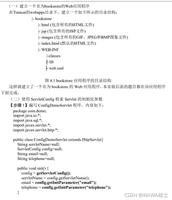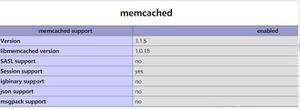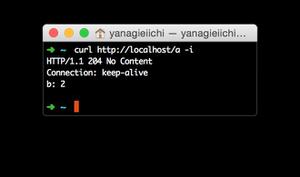centos7 mariadb主从复制配置搭建详解步骤
花了小一天的时间,终于实现了centos7 mariadb主从复制配置搭建,下面记录一下过程
环境:
虚拟机:vm8; centos7 版本:7.2.1511; mariadb 版本:centos7.2内置的
主库服务器: 10.69.5.200,CentOS 7,MariaDB 10已安装,有数据。
从库服务器1: 10.69.5.201,CentOS 7,MariaDB 10已安装,无应用数据。
主服务器配置
以下操作在主服务器192.168.71.151的/etc/my.cnf上进行。
1.修改配置文件,命令:vim /etc/my.cnf,输入下列代码:
[root@localhost ~]# cat /etc/my.cnf
[mysqld]
datadir=/var/lib/mysql
socket=/var/lib/mysql/mysql.sock
`# 新添加的部分
# 配置主从时需要添加以下信息 start
innodb_file_per_table=NO
log-bin=/var/lib/mysql/master-bin #log-bin没指定存储目录,则是默认datadir指向的目录
binlog_format=mixed
server-id=200
#每个服务器都需要添加server_id配置,各个服务器的server_id需要保证唯一性,实践中通常设置为服务器IP地址的最后一位
#配置主从时需要添加以下信息 end
`
# Disabling symbolic-links is recommended to prevent assorted security risks
symbolic-links=0
# Settings user and group are ignored when systemd is used.
# If you need to run mysqld under a different user or group,
# customize your systemd unit file for mariadb according to the
# instructions in http://fedoraproject.org/wiki/Systemd
[mysqld_safe]
log-error=/var/log/mariadb/mariadb.log
pid-file=/var/run/mariadb/mariadb.pid
#
# include all files from the config directory
#
!includedir /etc/my.cnf.d
最后,:wq!保存退出
2.重启mariadb服务,输入命令
[root@localhost ~]# systemctl restart mariadb.service
3.登录mariadb
[root@localhost ~]# mysql -u root -padmin
注:-p后是密码,中间没有空格
4.创建帐号并赋予replication的权限
从库,从主库复制数据时需要使用这个帐号进行
MariaDB [(none)]> GRANT REPLICATION SLAVE ON *.* TO 'root'@'10.69.5.%' IDENTIFIED BY 'admin';
Query OK, 0 rows affected (0.00 sec)
5.备份数据库数据,用于导入到从数据库中
加锁
实际工作中,备份的时候是不让往库中写数据的,所以数据库要加锁,只能读
MariaDB [(none)]> FLUSH TABLES WITH READ LOCK;
Query OK, 0 rows affected (0.00 sec)
记录主库log文件及其当前位置
MariaDB [(none)]> SHOW MASTER STATUS;
+------------------+----------+--------------+------------------+
| File | Position | Binlog_Do_DB | Binlog_Ignore_DB |
+------------------+----------+--------------+------------------+
| mysql-bin.000001 | 694 | | |
+------------------+----------+--------------+------------------+
记住File和Position的部分,从服务器会用到
备份数据,输入命令:
[root@localhost ~]# mysqldump -uroot -p --all-databases > /root/db.sql
解锁 主库
数据备份完成后,就可以释放主库上的锁:
MariaDB [(none)]> UNLOCK TABLES;
Query OK, 0 rows affected (0.00 sec)
从服务器配置
以下在从服务器上的操作
1.导入主库的数据
[root@localhost ~]# mysql -uroot -p < db.sql
2.从服务器/etc/my.cnf配置,设置relay-log
my.cnf文件中添加一行relay_log=relay-bin
如果不设置,默认是按主机名 + “-relay-bin”生成relay log。
[root@localhost ~]# cat /etc/my.cnf
[mysqld]
datadir=/var/lib/mysql
socket=/var/lib/mysql/mysql.sock
# Disabling symbolic-links is recommended to prevent assorted security risks
symbolic-links=0
`#配置主从时需要添加以下信息 start
innodb_file_per_table=NO
server-id=201 #一般与服务器ip的最后数字一致
relay-log=/var/lib/mysql/relay-bin
#配置主从时需要添加以下信息 end
`
# Settings user and group are ignored when systemd is used.
# If you need to run mysqld under a different user or group,
# customize your systemd unit file for mariadb according to the
# instructions in http://fedoraproject.org/wiki/Systemd
[mysqld_safe]
log-error=/var/log/mariadb/mariadb.log
pid-file=/var/run/mariadb/mariadb.pid
#
# include all files from the config directory
#
!includedir /etc/my.cnf.d
3.重启服务
[root@localhost ~]# systemctl restart mariadb.service
4.登录mariadb
[root@localhost ~]# mysql -u root -padmin
5.设置主从复制
MariaDB [(none)]> CHANGE MASTER TO MASTER_HOST='10.69.5.200',MASTER_USER='root', MASTER_PASSWORD='admin', MASTER_LOG_FILE='master-bin.000001', MASTER_LOG_POS= 694;
Query OK, 0 rows affected (0.02 sec)
这个命令完成以下几个任务:
a.设置当前服务器为主服务器(10.69.5.200)的从库
b.提供当前数据库(从库)从主库复制数据时所需的用户名和密码,即上面的GRANT REPLICATION SLAVE ON *.* TO 'root'@'10.69.5.%' IDENTIFIED BY 'admin';设置的
c.指定从库开始复制主库时需要使用的日志文件和文件位置,即上面主库执行SHOW MASTER STATUS;显示结果中的File和Position
6.开启主从复制
MariaDB [(none)]> START SLAVE;
Query OK, 0 rows affected (0.00 sec)
7.查看从库状态
MariaDB [(none)]> show slave status\G
*************************** 1. row ***************************
Slave_IO_State: Waiting for master to send event
Master_Host: 10.69.5.200
Master_User: root
Master_Port: 3306
Connect_Retry: 60
Master_Log_File: master-bin.000001
Read_Master_Log_Pos: 694
Relay_Log_File: relay-bin.000003
Relay_Log_Pos: 530
Relay_Master_Log_File: master-bin.000001
Slave_IO_Running: Yes
Slave_SQL_Running: Yes
Replicate_Do_DB:
Replicate_Ignore_DB:
Replicate_Do_Table:
Replicate_Ignore_Table:
Replicate_Wild_Do_Table:
Replicate_Wild_Ignore_Table:
Last_Errno: 0
Last_Error:
Skip_Counter: 0
Exec_Master_Log_Pos: 694
Relay_Log_Space: 818
Until_Condition: None
Until_Log_File:
Until_Log_Pos: 0
Master_SSL_Allowed: No
Master_SSL_CA_File:
Master_SSL_CA_Path:
Master_SSL_Cert:
Master_SSL_Cipher:
Master_SSL_Key:
Seconds_Behind_Master: 0
Master_SSL_Verify_Server_Cert: No
Last_IO_Errno: 0
Last_IO_Error:
Last_SQL_Errno: 0
Last_SQL_Error:
Replicate_Ignore_Server_Ids:
Master_Server_Id: 200
1 row in set (0.00 sec)
注意:结果中Slave_IO_Running和Slave_SQL_Running必须为Yes,如果不是,需要根据提示的错误修改。
验证
主服务器:
MariaDB [(none)]> show databases;
+--------------------+
| Database |
+--------------------+
| information_schema |
| mysql |
| mytest |
| performance_schema |
| test |
+--------------------+
5 rows in set (0.04 sec)
MariaDB [(none)]> use mytest;
Reading table information for completion of table and column names
You can turn off this feature to get a quicker startup with -A
Database changed
MariaDB [mytest]> select * from user;
+----+------+
| id | name |
+----+------+
| 1 | t |
| 2 | t2 |
| 3 | t3 |
+----+------+
3 rows in set (0.00 sec)
MariaDB [mytest]> insert into user(name) values('t4');
Query OK, 1 row affected (0.01 sec)
MariaDB [mytest]> select * from user;
+----+------+
| id | name |
+----+------+
| 1 | t |
| 2 | t2 |
| 3 | t3 |
| 4 | t4 |
+----+------+
4 rows in set (0.00 sec)
查看从服务器数据是否变化:
MariaDB [(none)]> use mytest;
Reading table information for completion of table and column names
You can turn off this feature to get a quicker startup with -A
Database changed
MariaDB [mytest]> select * from user;
+----+------+
| id | name |
+----+------+
| 1 | t |
| 2 | t2 |
+----+------+
2 rows in set (0.00 sec)
MariaDB [mytest]> select * from user;
+----+------+
| id | name |
+----+------+
| 1 | t |
| 2 | t2 |
| 4 | t4 |
+----+------+
3 rows in set (0.00 sec)
可以看到,从服务器更新了数据
搭建过程中遇到的问题及解决方法
问题1:从服务器设置主从复制出现错误:
MariaDB [mytest]> start slave;
ERROR 1201 (HY000): Could not initialize master info structure; more error messages can be found in the MariaDB error log
发现
Slave_IO_Running: No
Slave_SQL_Running: No
进一步发现我输入的是:CHANGE MASTER TO MASTER_HOST='192.168.71.151',MASTER_USER='slave_user', MASTER_PASSWORD='bigs3cret', MASTER_LOG_FILE='mysql-bin.000001', MASTER_LOG_POS= 469;
重新输入:MariaDB [(none)]> CHANGE MASTER TO MASTER_HOST='10.69.5.200',MASTER_USER='root', MASTER_PASSWORD='admin', MASTER_LOG_FILE='mysql-bin.000001', MASTER_LOG_POS= 469;
报错:ERROR 1201 (HY000): Could not initialize master info structure; more error messages can be found in the MariaDB error log
于是看错误日志:/var/log/mariadb/mariadb.log
错误日志的位置在/etc/my.cnf中配置:log-error=/
[root@localhost ~]# cat /var/log/mariadb/mariadb.log
160915 12:52:02 [ERROR] Failed to open the relay log './mariadb-relay-bin.000001' (relay_log_pos 4)
160915 12:52:02 [ERROR] Could not find target log during relay log initialization
通过查找答案: 删除/var/lib/mysql/路径下the ‘master.info' ‘mysqld-relay-bin.*' ‘relay-log.info' ‘relay-log-index.*'
运行命令:rm -rf master.info,rm -rf *relay*
重启服务:[root@localhost mysql]# systemctl restart mariadb.service
进入mariadb:
[root@localhost mysql]# mysql -u root -padmin
MariaDB [(none)]> flush logs;
Query OK, 0 rows affected (0.00 sec)
MariaDB [(none)]> reset slave;
Query OK, 0 rows affected (0.00 sec)
重新设置主从复制关系:
MariaDB [(none)]> CHANGE MASTER TO MASTER_HOST='10.69.5.200',MASTER_USER='root', MASTER_PASSWORD='admin', MASTER_LOG_FILE='master-bin.000001', MASTER_LOG_POS= 694;
Query OK, 0 rows affected (0.02 sec)
这次成功了。
MariaDB [(none)]> start slave;
Query OK, 0 rows affected (0.01 sec)
查看从库状态:
MariaDB [(none)]> show slave status\G
*************************** 1. row ***************************
Slave_IO_State: Connecting to master
Master_Host: 10.69.5.200
Master_User: root
Master_Port: 3306
Connect_Retry: 60
Master_Log_File: master-bin.000001
Read_Master_Log_Pos: 694
Relay_Log_File: relay-bin.000001
Relay_Log_Pos: 4
Relay_Master_Log_File: master-bin.000001
Slave_IO_Running: Connecting
Slave_SQL_Running: Yes
···
···
···
Replicate_Ignore_Server_Ids:
Master_Server_Id: 0
1 row in set (0.00 sec)
发现问题2.Slave_IO_Running: Connecting
问题2.Slave_IO_Running: Connecting
查看错误日志
[root@localhost ~]# cat /var/log/mariadb/mariadb.log
···
160915 13:17:56 [Note] Slave SQL thread initialized, starting replication in log 'master-bin.000001' at position 694, relay log '/var/lib/mysql/relay-bin.000001' position: 4
160915 13:17:56 [ERROR] Slave I/O: error connecting to master 'root@10.69.5.200:3306' - retry-time: 60 retries: 86400 message: Can't connect to MySQL server on '10.69.5.200' (113), Error_code: 2003
这时运行telnet命令
[root@localhost ~]# telnet 10.69.5.200 3306
-bash: telnet: 未找到命令
安装telnet
[root@localhost ~]# yum -y install telnet-server.x86_64
安装成功后重启telnet服务
[root@localhost ~]# systemctl start telnet.socket
[root@localhost ~]# systemctl enable telnet.socket
[root@localhost ~]# telnet 10.69.5.200 3306
-bash: telnet: 未找到命令
还是不行
这回我reboot重启虚拟机,运行命令
注意:这回不是"yum -y install telnet-server.x86_64"了,这回没有telnet-server了
[root@localhost ~]# yum install telnet.x86_64
运行成功了
接着
[root@localhost ~]# systemctl enable telnet.socket
[root@localhost ~]# systemctl start telnet.socket
[root@localhost ~]# firewall-cmd --add-service=telnet --permanent
success
[root@localhost ~]# telnet
telnet>
telnet终于安装成功了
从最新版本的centos7系统开始,默认的是 Mariadb而不是mysql!
使用系统自带的repos安装很简单:
yum install mariadb mariadb-server
- systemctl start mariadb ==> 启动mariadb
- systemctl enable mariadb ==> 开机自启动
- mysql_secure_installation ==> 设置 root密码等相关
- mysql -u root -p 123456 ==> 测试登录!
结束!
以上是 centos7 mariadb主从复制配置搭建详解步骤 的全部内容, 来源链接: utcz.com/z/314169.html









